 W
WThe Organization of Military Museums of Canada is a national organization for the promotion of military museums in Canada.
 W
WFort Anne is a four-bastion fort built to protect the harbour of Annapolis Royal, Nova Scotia. The fort repelled all French attacks during the early stages of King George's War.
 W
WBase Borden Military Museum is a military museum located on the grounds of CFB Borden, in Borden, Ontario, Canada. Combining four separate museums, it has numerous items, equipment and vehicles from all eras of Canadian military history, including a large number of historic armored vehicles and aircraft displayed outside in the Major-General F. F. Worthington Memorial Park and around the base.
 W
WBattalion Park is a geoglyph site in southwest Calgary, Alberta, Canada. It is located on Signal Hill, overlooking the Tsuu T'ina Nation, as well as lands formerly known as Camp Sarcee and later Sarcee Training Area, a military reserve used by the Canadian Forces from before the First World War up until the 1990s. The park extends over an area of 93 hectares, north of the Elbow River. Its heritage value is associated with its dedication to the heroic efforts of Albertan soldiers during the First World War. The site contains four geoglyphs, numbered 137, 113, 151, and 51. The large, whitewashed stones, totalling 16,000 in all, form the centrepiece of the park. Arranged on the side of the hill, and visible from various parts of the city, they represent the battalions numbered 137th, 113th, 151st, and 51st.
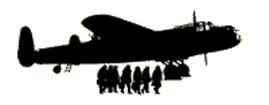 W
WThe Bomber Command Museum of Canada, formerly the Nanton Lancaster Society Museum, is an aviation museum in Nanton, Alberta. The museum opened in 1986 and was founded to protect and restore Avro Lancaster FM159, one of only 17 remaining in the world. It has since grown to include a large collection of aircraft, many of which were used during the War by the British Commonwealth Air Training Plan.
 W
WThe Canadian War Museum is a national museum on the country's military history in Ottawa, Ontario, Canada. The museum serves as both an educational facility on Canadian military history, in addition to serving as a place of remembrance. The 440,000 square metres (4,700,000 sq ft) museum building is situated south of the Ottawa River in LeBreton Flats. The museum houses a number of exhibitions and memorials, in addition to a theatre, curatorial and conservation spaces, storage space, and a cafeteria. The building also houses the Military History Research Centre, the museum's library and archives.
 W
WThe Canadian Warplane Heritage Museum is a Canadian aviation museum located at the John C. Munro Hamilton International Airport in Hamilton, Ontario. The museum has 47 military jets and propeller-driven aircraft on display.
 W
WCarleton Martello Tower in Saint John, New Brunswick, is one of the nine surviving Martello Towers in Canada. The tower dates from the War of 1812 and played a significant role in conflicts until the Second World War. The site now features a restored powder magazine, a restored barracks room, and exhibits in the tower and in the visitor centre. The tower's roof offers a view of the city of Saint John and its harbour. Carleton Martello Tower is one of the oldest buildings in the city and has been designated as a National Historic Site of Canada since 1930. It has been open to the public since 1963.
 W
WCanadian Forces Station Carp is a former Canadian military facility located in the rural farming community of Carp in Ottawa, Ontario, approximately 30 km (19 mi) west of downtown Ottawa.
 W
WThe Chinese Canadian Military Museum Society (CCMMS) is located in Vancouver, on the second floor of the Chinese Cultural Centre. It was created in 1998 and maintains a museum in that city.
 W
WThe Citadelle of Quebec, also known as La Citadelle, is an active military installation and the secondary official residence of both the Canadian monarch and the Governor General of Canada. It is located atop Cap Diamant, adjoining the Plains of Abraham in Quebec City, Quebec. The citadel contains the oldest military building in Canada, and forms part of the fortifications of Quebec City, which is one of only two cities in North America still surrounded by fortifications, the other being Campeche, Mexico.
 W
WThe Cold Lake Air Force Museum is a military aviation museum located in Cold Lake, Alberta. The museum preserves and exhibits the heritage and history of 4 Wing Cold Lake and 42 Radar Squadron. The Air Force Museum is actually one of four museums based on the old site of 42 Radar Squadron, who re-located to CFB Cold Lake in 1992. The Cold Lake Museums are connected to the Air Force Museum through a covered hallway affectionately dubbed 'The Tunnel'. All together, the museums are referred to as the Cold Lake Museums or the Tri-City Museums. The old facility of 42 Radar Squadron was decommissioned in 1992, and the museum opened its doors for the first time on July 1, 1998.
 W
WThe Commonwealth Air Training Plan Museum is an aviation museum located at Brandon Municipal Airport, Brandon, Manitoba. It is dedicated to the memory of the airmen from the British Commonwealth Air Training Plan, who trained at World War II air stations across Canada. The museum is in stage 1 of redevelopment, which will see it restored to include the main hangar, medical building, chapel, H-hut aircrew barracks, motor pool building, canteen and interpretive center.
 W
WThe Comox Air Force Museum collects, preserves, interprets and exhibits artifacts relating to CFB Comox, its squadrons and its units. The museum is located at the main gate of CFB Comox, located in the Comox Valley on Vancouver Island, British Columbia. The museum opened its doors in the current location 12 September 1987. In addition to the exhibits, the museum has an aviation reference library and an aviation art gallery. The Heritage Air Park where the aircraft are on display is located 500 metres down the road from the museum as is the Y2K Spitfire restoration hangar.
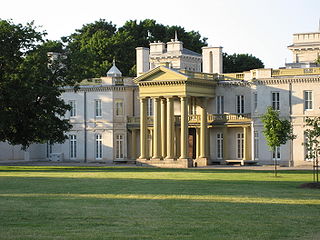 W
WDundurn Castle is a historic neoclassical mansion on York Boulevard in Hamilton, Ontario, Canada. The 18,000-square-foot (1,700 m2) house took three years and $175,000 to build, and was completed in 1835. The forty room castle featured the latest conveniences of gas lighting and running water. It is currently owned by the City of Hamilton, which purchased it in 1899 or 1900 for $50,000. The City has spent nearly $3 million renovating the site to make it open to the public. The rooms have been restored to the year 1855 when its owner Sir Allan Napier MacNab, 1st Baronet, was at the height of his career. Costumed interpreters guide visitors through the home, illustrating daily life from the 1850s. The Duchess of Cornwall, a descendant of Sir Allan MacNab, is the Royal Patron of Dundurn Castle.
 W
WFort Edward is a National Historic Site of Canada in Windsor, Nova Scotia, and was built during Father Le Loutre's War (1749-1755). The British built the fort to help prevent the Acadian Exodus from the region. The Fort is most famous for the role it played both in the Expulsion of the Acadians (1755) and in protecting Halifax, Nova Scotia from a land assault in the American Revolution. While much of Fort Edward has been destroyed, including the officers quarters and barracks, the blockhouse that remains is the oldest extant in North America. A cairn was later added to the site.
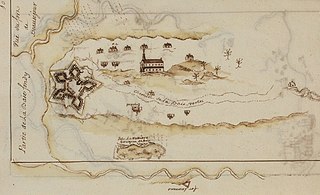 W
WFort Beauséjour is a large, five-bastioned fort on the Isthmus of Chignecto in eastern Canada, a neck of land connecting the present-day province of New Brunswick with that of Nova Scotia. The site was strategically important in Acadia, a French colony that included primarily the Maritimes, the eastern part of Quebec, and northern Maine of the later United States. The fort was built by the French from 1751 to 1752. They surrendered it to the British in 1755 after their defeat in the Battle of Fort Beauséjour, during the Seven Years' War. The British renamed the structure as Fort Cumberland. The fort was strategically important throughout the Anglo-French rivalry of 1749–63, known as the French and Indian Wars by British colonists. Less than a generation later, it was the site of the 1776 Battle of Fort Cumberland, when the British forces repulsed sympathisers of the American Revolution.
 W
WFort Calgary was established in 1875 as Fort Brisebois by the North-West Mounted Police at the confluence of the Bow and Elbow rivers, on traditional Niitsitapi (Blackfoot) territory in what is now called Calgary. The fort was built to control the illegal American whiskey trade, to make way for the coming Canadian Pacific Railway, and to create 'good relations' with the Indigenous peoples of the territory. The site was purchased by the City of Calgary in 1974 and reopened in 1978 as a historic site and museum.
 W
WFort Chambly is a historic fort in La Vallée-du-Richelieu Regional County Municipality, Quebec. It is designated as a National Historic Site of Canada. Fort Chambly was formerly known as Fort St. Louis. It was part of a series of five fortifications built along the Richelieu River to protect travellers on the river from the Iroquois. The region is informally known as la Vallée-des-Forts.
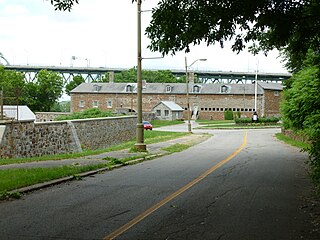 W
WThe Fort de l'Île Sainte-Hélène, a historic site on Saint Helen's Island in the city of Montreal, Quebec, was constructed in the early 1820s as an arsenal in the defensive chain of forts built to protect Canada from a threat of American invasion. Although not heavily fortified, it served an important purpose as the central artillery depot for all forts west, and in the Richelieu River Valley, known as the Valley of the Forts. These included Fort Henry and Fort Lennox. The red stone used to build the Fort is a breccia quarried on the island, which is situated in the St. Lawrence River between the island of Montreal and the south shore.
 W
WOld Fort Erie, also known as Fort Erie, or the Fort Erie National Historic Site of Canada, was the first British fort to be constructed as part of a network developed after the Seven Years' War was concluded by the Treaty of Paris (1763) at which time all of New France had been ceded to Great Britain. It is located on the southern edge of the Town of Fort Erie, Ontario, directly across the Niagara River from Buffalo, New York.
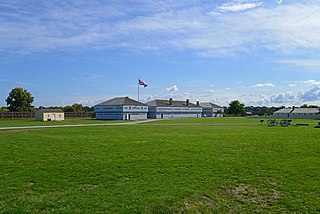 W
WFort George was a military fortification in Niagara-on-the-Lake, Ontario, Canada. The fort was used by the British Army, the Canadian militia, and the United States Armed Forces for a brief period. The fort was mostly destroyed during the War of 1812. The site of the fort has been a national historic site National Historic Site of Canada since 1921, and features a reconstruction of Fort George.
 W
WFort Henry National Historic Site is located in Kingston, Ontario, Canada on Point Henry, a strategic, elevated point near the mouth of the Cataraqui River where it flows into the St. Lawrence River at the east end of Lake Ontario. The fort and the point on which the fort was built were named after Henry Hamilton, former Lieutenant-Governor of the Province of Quebec.
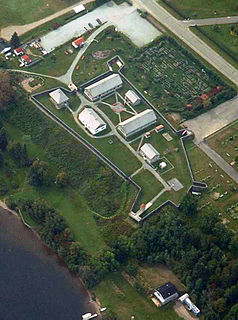 W
WFort Ingall was originally a British fieldwork built in Cabano, Quebec, Canada in 1839 for the Aroostook War between Great Britain and the United States of America.
 W
WFort Lennox occupies most of Île aux Noix, an island in the middle of the Richelieu River in the parish of Saint-Paul-de-l'Île-aux-Noix, Quebec, near the Canada-U.S. border. The fort features restored defence works and stonework buildings, and is surrounded by a star-shaped moat.
 W
WFort Malden, formally known as Fort Amherstburg, is a defence fortification located in Amherstburg, Ontario. It was built in 1795 by Britain in order to ensure the security of British North America against any potential threat of American Invasion. Throughout its history, it is most known for its military application during the War of 1812 as Sir Isaac Brock and Tecumseh met here to plan the Siege of Detroit. It was the British stronghold during the War and is now one of the National Historic Sites of Canada.The Fort also had an important role in securing Upper Canada's border with Detroit during the Upper Canada Rebellion.
 W
WFort Rodd Hill National Historic Site is a 19th-century coastal artillery fort on the Colwood, British Columbia side of Esquimalt Harbour,. The site is adjacent to Fisgard Lighthouse National Historic Site, the first lighthouse on the west coast of Canada. Both the fort and lighthouse are managed and presented to the public by Parks Canada.
 W
WFort Saint-Jean is a fort in the Canadian province of Quebec located on the Richelieu River. The fort was first built in 1666 by soldiers of the Carignan-Salières Regiment and was part of a series of forts built along the Richelieu River. Over the years, it was destroyed and rebuilt several times, but it is, after Quebec City, the military site that has been occupied non-stop for the longest time in Canada. The fort is designated as a National Historic Site of Canada, and it currently houses the Royal Military College of Saint-Jean. The fort has been continually occupied since 1748, and is the core from which the city of Saint-Jean-sur-Richelieu, Quebec grew around. Fort Saint-Jean played a crucial role during the 1775 American invasion of the Province of Quebec.
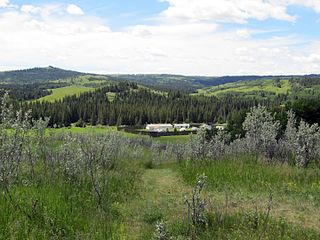 W
WFort Walsh is a National Historic Site of Canada that was a North-West Mounted Police (NWMP) fort and the site of the Cypress Hills Massacre. Administered by Parks Canada, it forms a constituent part of Cypress Hills Interprovincial Park.
 W
WFort Wellington National Historic Site is a historic military fortification located on the north shore of the St. Lawrence River at Prescott, Ontario. The military fortification was used by the British Army, and the Canadian militia for most of the 19th century, and by the militia in the 20th century, until 1923, when the property was handed over to the Dominion Parks Commission, the predecessor to Parks Canada. The fort was earlier named a National Historic Site of Canada on January 1920.
 W
WFort William Augustus was a British fort built on Grassy Island off of Canso, Nova Scotia during the lead up to Father Rale's War (1720). In the wake of The Squirrel Affair and the British attack on Fort St. Louis, Cyprian Southack urged Governor Richard Philipps to build the fort. The Fort was named after King George's son Prince William, Duke of Cumberland.
 W
WFort York is an early 19th-century military fortification in the Fort York neighbourhood of Toronto, Ontario, Canada. The fort was used by the British Army and the Canadian militia for its garrisons, and to defend the entrance of the Toronto Harbour. The fort features stone-lined earthwork walls and eight historical buildings within them, including two blockhouses. The fort forms a part of Fort York National Historic Site, a 16.6-hectare-site (41-acre) that includes the fort, Garrison Common, military cemeteries, and a visitor centre.
 W
WThe Greenwood Military Aviation Museum is an aviation museum located in Greenwood, Nova Scotia. The museum houses 15 aircraft and is highlighted by its Avro Lancaster, one of only 17 remaining in the world and one of only three to have flown sorties over continental Europe.
 W
WCitadel Hill is a hill that is a National Historic Site in Halifax, Nova Scotia, Canada. Four fortifications have been constructed on Citadel Hill since the city was founded by the English in 1749, and were referred to as Fort George—but only the third fort was officially named Fort George. According to General Orders of October 20, 1798, it was named after King George III. The first two and the fourth and current fort, were officially called the Halifax Citadel. The last is a concrete star fort.
 W
WThe Jet Aircraft Museum is a charitable foundation aviation museum specializing in Canadian Forces jet aircraft. The museum is located at the London International Airport, Ontario, Canada.
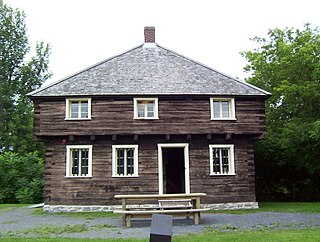 W
WLacolle Mills Blockhouse is a blockhouse and museum located alongside the Lacolle River near the village of Lacolle, Quebec.
 W
WLes Voltigeurs de Québec is a Primary Reserve infantry regiment of the Canadian Forces. The name of the regiment commemorates another older French-speaking Canadian militia light infantry unit, the Canadian Voltigeurs. The founder of the Canadian Voltigeurs, lieutenant-colonel Charles-Michel d'Irumberry de Salaberry, was the father of the two men who raised Les Voltigeurs de Québec. The regiment was formed in March 1862, with its headquarters in Quebec City, by the amalgamation into a regiment of eight independent Volunteer Militia Rifle companies. The first of these companies was originally raised in December 1861. Between 1862 and 1867 these companies were frequently disbanded, reformed and renumbered. In 1942 it provided an armoured regiment.
 W
WThe Military Communications and Electronics Museum is a military signals museum on Ontario Highway 2 at CFB Kingston in Kingston, Ontario, Canada. A member organisation of the Organization of Military Museums of Canada, the communications museum was established at the base in 1961 and moved to its current purpose-built building in 1996.
 W
WThe Military Museums is a reorganization of the former Museum of the Regiments in Calgary, Alberta, announced by Sophie, Countess of Wessex, on June 3, 2006. The new museum comprises the former Museum of the Regiments as well as the relocated Naval Museum of Alberta and an Air Force Wing consisting of artifacts currently being acquired.
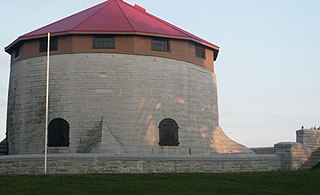 W
WMurney Tower is a Martello tower in Kingston, Ontario, Canada, whose construction dates to January 1846. The Tower was built in response to the Oregon Crisis, which was a tense dispute over the border between British North America and the United States in the 1840s.
 W
WThe Musée de la Défense aérienne is an aviation museum in La Baie, Quebec. The museum holds a collection of nine military aircraft. It is one of three aviation museums in Quebec, along with Vintage Wings and the Montreal Aviation Museum.
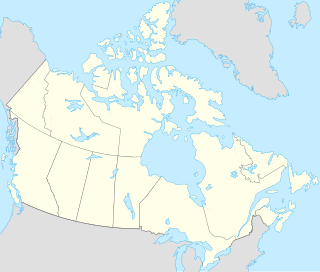 W
WThe National Air Force Museum of Canada, formerly known as the RCAF Memorial Museum, is an aviation museum dedicated to preserving the history of the Royal Canadian Air Force (RCAF) and is located on the west side of CFB Trenton in Trenton, Ontario.
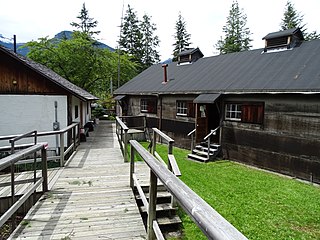 W
WNikkei Internment Memorial Centre is a museum that preserves and interprets one of ten Canadian concentration camps where more than 27,000 Japanese Canadians were incarcerated by the Canadian government during and after World War II from 1942 to 1949. The centre was designated a National Historic Site of Canada in 2007.
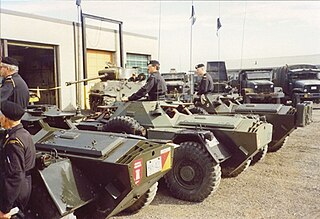 W
WThe Oshawa Military and Industrial Museum (Map) is an accredited Canadian Forces Museum located in Oshawa, Ontario, Canada. The museum, more commonly known as The Ontario Regiment (RCAC) 'Ferret Club', traces its roots in Oshawa to 1980, having grown to become the Historic Vehicle Section of the Ontario Regiment (RCAC) Museum.
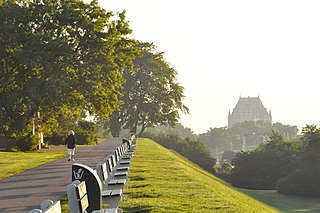 W
WThe Plains of Abraham is a historic area within The Battlefields Park in Quebec City, Quebec, Canada. The land is the site of the Battle of the Plains of Abraham, which took place on 13 September 1759, but hundreds of acres of the fields became used for grazing, housing, and minor industrial structures. Only in 1908 was the land ceded to Quebec City, though administered by the specifically created and federally-run National Battlefields Commission. The park is today used by 4 million visitors and tourists annually for sports, relaxation, outdoor concerts, and festivals.
 W
WThe Battle of Restigouche was a naval battle fought in 1760 during the Seven Years' War on the Restigouche River between the British Royal Navy and the small flotilla of vessels of the French Navy, Acadian militia and Mi'kmaq militias. The loss of the French vessels, which had been sent to support and resupply the troops in New France after the fall of Quebec, marked the end of any serious attempt by France to keep hold of their colonies in North America. The battle was the last major engagement of the Mi'kmaq and Acadian militias before the Burying of the Hatchet Ceremony between the Mi'kmaq and the British.
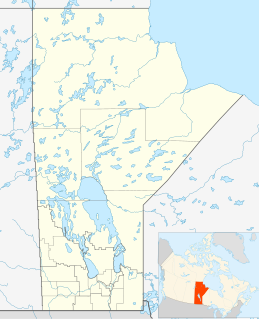 W
WThe Royal Canadian Artillery Museum, Canada's National Artillery Museum, is a museum dedicated to telling the complete story of the more than 200,000 Canadian Gunners who have served Canada in war and peace since 1855. The museum is Canada's National Artillery Museum, a Manitoba Star Attraction and one of the largest military museums in Canada.The Royal Regiment of Canadian Artillery (RCA) has been a part of the fabric of Canadian history since the earliest days of our nation. In 1962, the RCA Museum was established at Canadian Forces Base Shilo in order to preserve and interpret this proud heritage for future generations.
 W
WThe Royal Canadian Military Institute (RCMI) is a private members’ organization located in Toronto, Ontario, Canada. It was founded as the Canadian Military Institute on January 14, 1890. General Sir William Dillon Otter set the founding principles: "to provide in an Institute for the defence forces of Canada a Library, museum and club for the purposes of the promotion of military art, science and literature, to gather and preserve the records of the defence forces, and develop its specialized field in Canadian history." The motto of the RCMI is Fidelis Per Manere.
 W
WThe Royal Military College of Canada Museum, established in 1962, is located in a Martello tower known as Fort Frederick on the campus of the Royal Military College of Canada in Kingston, Ontario, and is operated by the college. The museum has regular hours from the last weekend in June until Labour Day. Although admission is free, donations are accepted. Guided tours are offered in English and French. Genealogical research and archival records services are offered relating to college history or with inquires relating to ex-cadets when permitted by privacy regulations.
 W
WThe Royal Military College Saint-Jean, commonly referred to as RMC Saint-Jean, is a Canadian military college. It is located on the historical site of Fort Saint-Jean, in Saint-Jean-sur-Richelieu, Quebec, 40 km south of Montreal. RMC Saint-Jean is an arm of the Canadian Military College (CMC) system that provides two college-level programs in Social Science and Science, which are closely integrated with the undergraduate programs offered by the Royal Military College of Canada, and the International Studies undergraduate program delivered by RMC Saint-Jean.
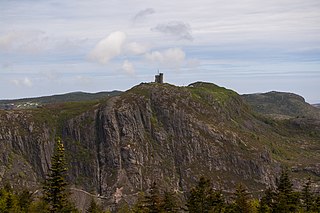 W
WSignal Hill is a hill which overlooks the city of St. John's, Newfoundland and Labrador, Canada. Most of the hill is a National Historic Site, and adjacent to it is the site of the Johnson Geo Centre and its associated park. The highest point, Ladies' Lookout, above Cabot Tower, is 167 metres (548 ft) high.
 W
WThe Swords and Ploughshares Museum is a private military museum located south of the village of Kars, Ontario, Canada. The Museum is focused on a specific aspect of Canadian military history: the Citizen Soldier at peace and at war. The Museum uses vehicles and artifacts to demonstrate how they could be adapted and used by Citizen Soldiers for both military and civilian purposes. For example, a Ram tank from World War II that was modified after the war to serve as a snowplow was a featured display at the Museum for many years.
 W
WThe Hangar Flight Museum, formerly known as the Aero Space Museum of Calgary is a museum in Calgary, Alberta, Canada. The museum is located immediately south of the Calgary International Airport. Over 24 aircraft are on display, as well as 58 aeronautical engines. A section details the Canadian space programs. Archives containing documents about aeronautics are also located on the premises.
 W
WThe Royal Canadian Regiment Museum is located at Wolseley Barracks in London, Ontario, Canada.
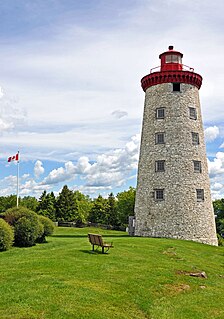 W
WBattle of the Windmill National Historic Site marks the site of the November 1838 Battle of the Windmill, fought around a grist windmill near Prescott, Ontario, Canada. In 1873, the original grist windmill was converted into a lighthouse by the Canadian Department of Marine. The lighthouse became known as Windmill Point Light.